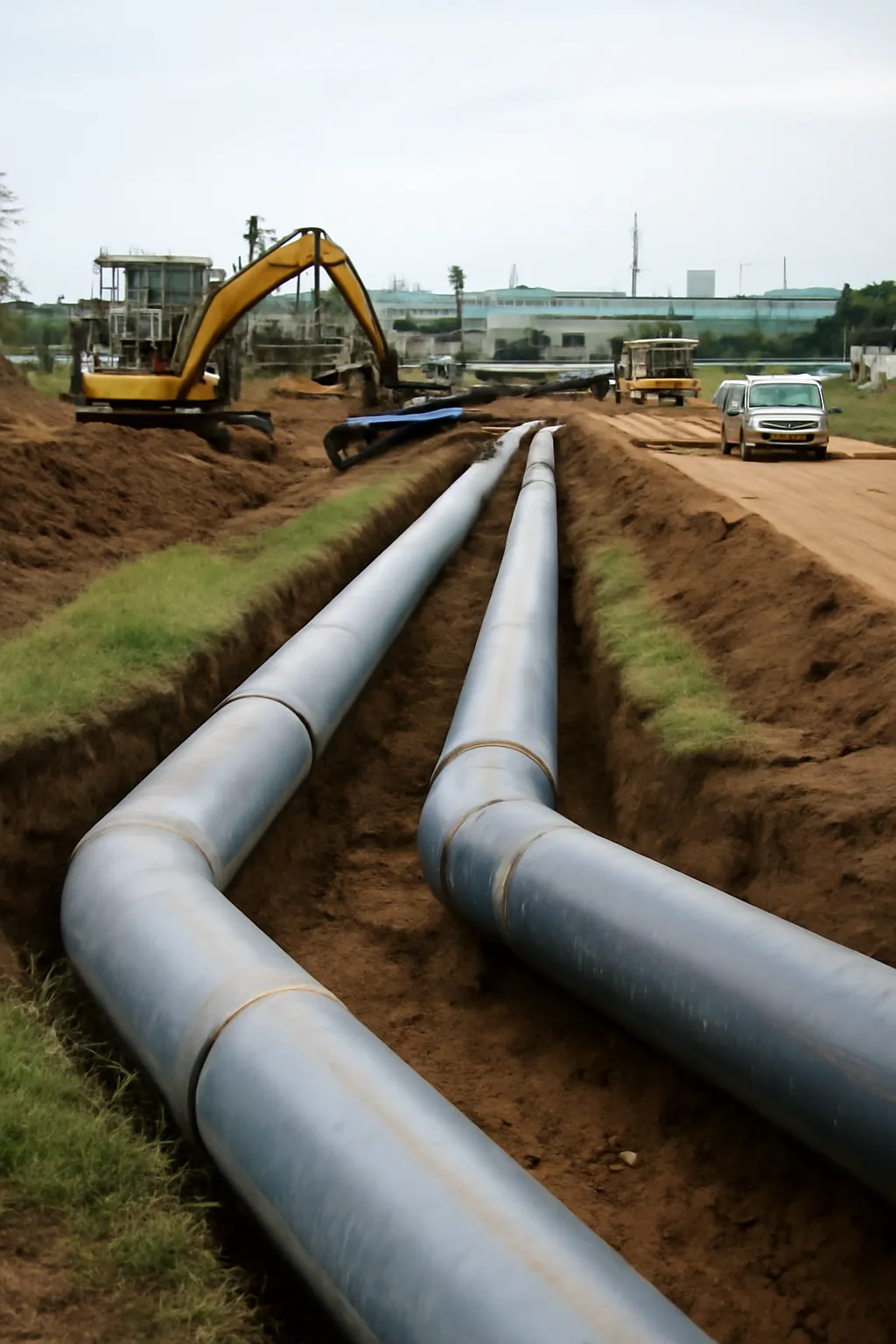LPG (Liquefied Petroleum Gas) is an essential source of energy used in homes, industries, and vehicles. To ensure the smooth distribution of LPG across vast regions, the infrastructure required is vast and intricate. One of the key players in this infrastructure is the Korea LPG Pipeline Network Project. In this article, we’ll explore how this project is shaping the future of energy distribution in South Korea.
Ever wondered how LPG gets delivered seamlessly across vast regions? The Korea LPG Pipeline Network Project is revolutionizing this process. Learn how it works and why it’s a game-changer for the industry.
LPG Pipeline Business: The Backbone of Energy Distribution
LPG is a clean and efficient source of energy, but transporting it effectively and safely to the end users has always been a logistical challenge. While LPG is typically delivered via cylinders or in bulk shipments, the real game-changer is the development of a comprehensive LPG pipeline network.
The LPG pipeline business plays a critical role in ensuring that homes and industries receive a steady, reliable, and safe supply of LPG. These pipelines are designed to transport LPG in large quantities over long distances with minimal risk of leakage or damage. In a country like South Korea, with its bustling industrial hubs and high urban population density, a well-organized pipeline system is essential.
Benefits of the LPG Pipeline Business:
-
Efficiency With pipelines, LPG can be delivered continuously, reducing the need for costly and environmentally damaging transportation methods.
-
Cost-effectiveness Though the initial installation cost is high, once the infrastructure is set up, the operational costs are low.
-
Safety Pipelines are designed to ensure that LPG is transported without the risk of leaks or accidents, making it one of the safest methods of transportation.
-
Environmental Impact Reducing the need for trucks and shipping, pipelines lower the carbon footprint associated with LPG distribution.
For example, the city of Seoul benefits from a robust LPG pipeline system that ensures the energy needs of millions of people are met seamlessly. This is just one instance of how essential this infrastructure is for the country’s energy grid.
👉 Learn More About LPG Pipeline Systems 👈
Korea LPG Pipeline Network Project: Transforming the National Energy Landscape
The Korea LPG Pipeline Network Project is a forward-thinking initiative designed to transform how LPG is transported and distributed across South Korea. The project aims to establish an extensive pipeline system that stretches from LPG production facilities to end-users in both residential and commercial sectors. This project not only supports the distribution of LPG but also ensures that energy supply is resilient, secure, and consistent.
The project’s success lies in its scale and the integration of modern technology. By using advanced materials, sensors, and automated control systems, the network is designed to operate with minimal human intervention. Additionally, it features redundancy systems to guarantee continuous service, even in the event of unexpected disruptions or natural disasters.
Key Aspects of the Korea LPG Pipeline Network Project:
-
Expansion The project is continuously expanding, ensuring that no region is left behind in the transition to a more sustainable energy distribution model.
-
Safety Standards South Korea has stringent safety standards, and the pipeline network adheres to these, ensuring that risk to human life and property is minimized.
-
Technological Integration The project utilizes cutting-edge monitoring systems that provide real-time data on the pipeline’s condition, enabling prompt maintenance and repair.
-
Collaboration with Stakeholders The project involves partnerships between the government, private sector, and local communities, ensuring that it benefits all stakeholders involved.
As of 2025, the project covers a significant portion of the country, and the ongoing work promises to increase coverage. For instance, the expansion into the rural areas of Jeju Island will drastically improve energy access for local residents.
👉 Discover More About the Project’s Impact 👈
LPG Piping Network Project: A Step Towards a Sustainable Future
The LPG piping network project focuses on creating an intricate system of pipes that distribute LPG efficiently and securely throughout urban and rural areas. The challenge here lies in constructing a network that can withstand the tests of time, natural disasters, and growing demand. The piping is laid underground, preventing disruptions in traffic and maintaining the aesthetic integrity of cities.
The benefits of an LPG piping network are multi-faceted. Not only does it make the distribution of LPG more reliable, but it also enhances safety by removing the risks associated with transporting LPG via vehicles. A piping system eliminates road traffic for LPG transport trucks, reducing the risk of accidents.
Challenges in the LPG Piping Network Project:
-
Geographic Barriers South Korea’s mountainous terrain can make laying pipes across certain areas difficult.
-
Environmental Concerns The construction of the network must account for environmental preservation, especially in rural and coastal areas.
-
Maintenance As the network expands, maintaining the infrastructure becomes a priority to ensure its efficiency and safety.
However, with advancements in technology and better management strategies, these challenges are being met head-on. The growing trend of urbanization in South Korea has spurred investments in more advanced LPG piping solutions that meet the needs of a changing population.
👉 Explore the Challenges and Solutions of the Piping Network 👈
Conclusion
The Korea LPG Pipeline Network Project is a prime example of how infrastructure innovation can enhance energy distribution, safety, and environmental sustainability. As South Korea continues to expand its network of pipelines, it will play a crucial role in powering homes, industries, and businesses in a safe, efficient, and eco-friendly manner.
As we look to the future, the demand for reliable and secure energy will only increase. The Korea LPG Pipeline Network Project stands as a model for other countries, demonstrating that large-scale infrastructure projects, when implemented thoughtfully, can lead to a greener and more sustainable energy future. The continued development and expansion of this network will ultimately ensure that LPG remains a critical component of South Korea’s energy landscape for years to come.






